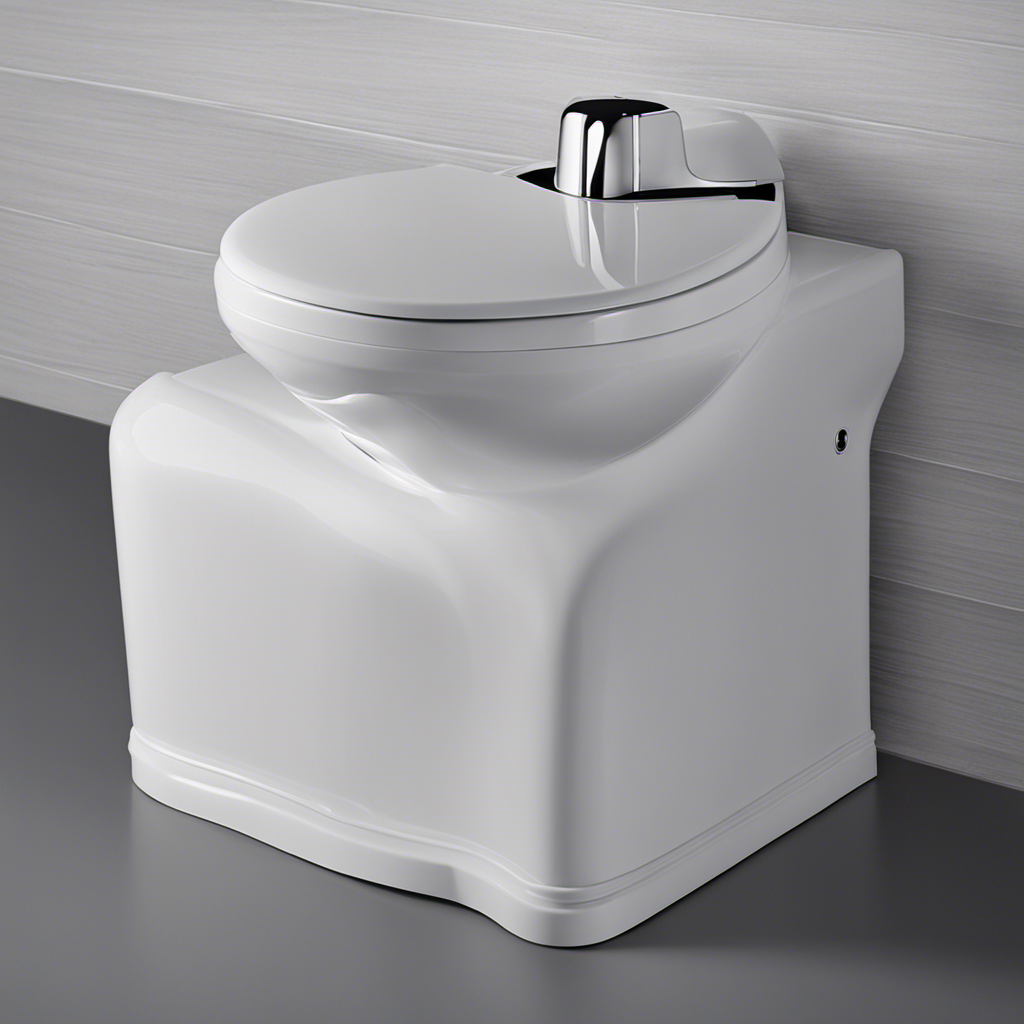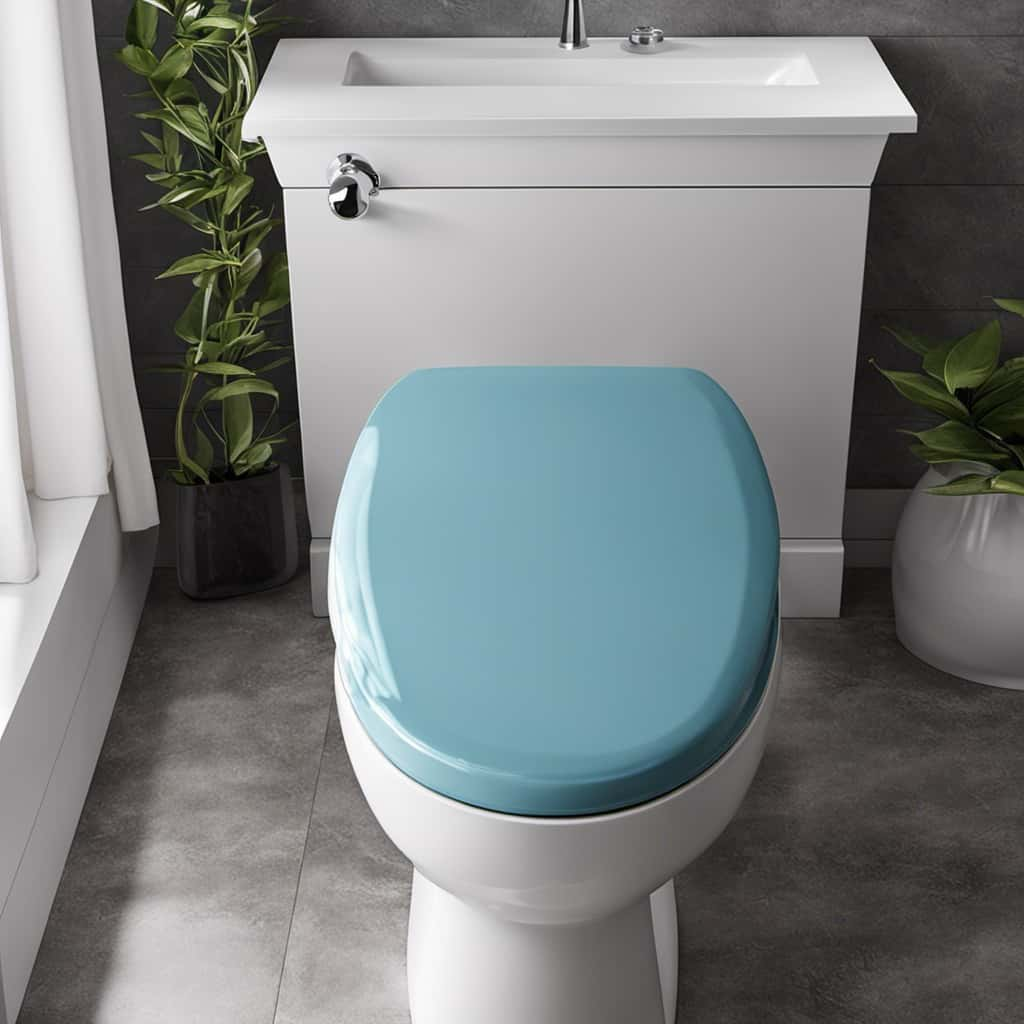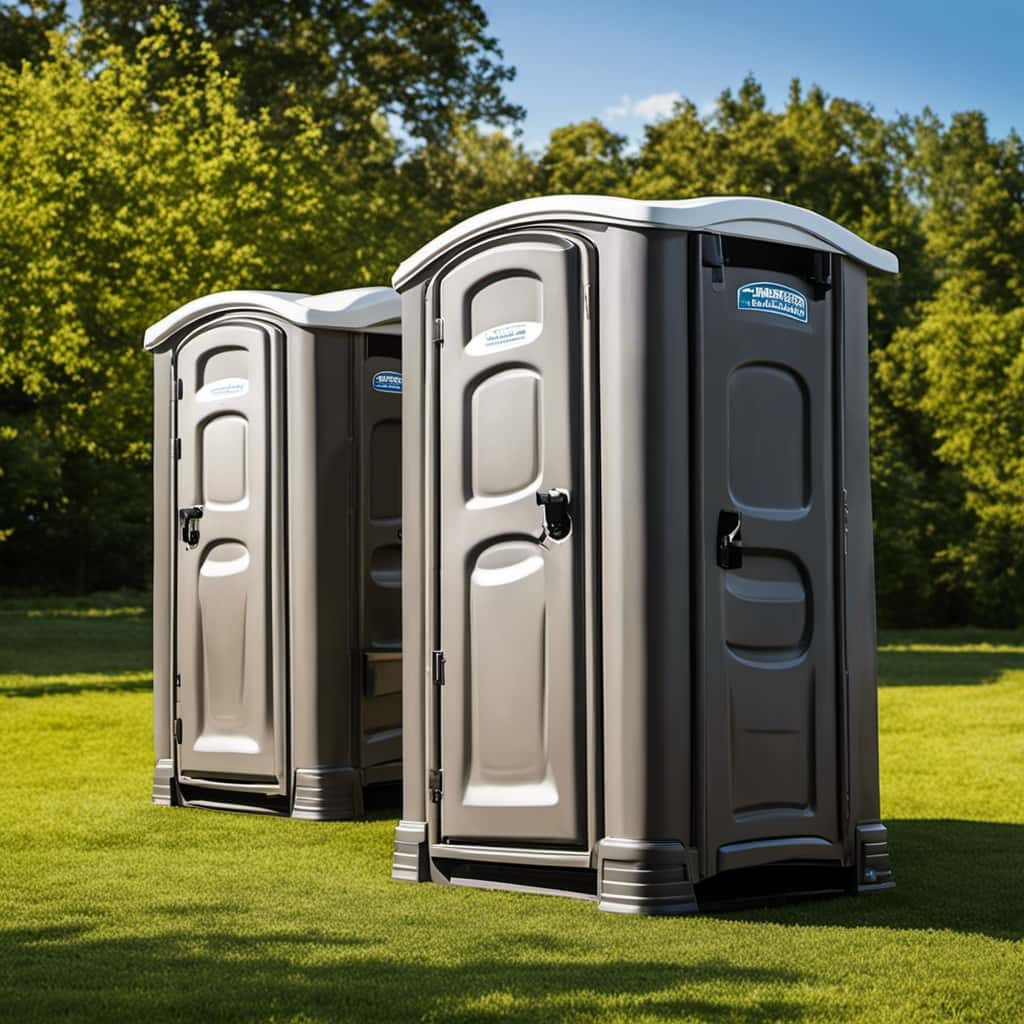We’ve all been there – the frustration of a malfunctioning toilet flush. But fear not, because we have the answers you need to fix it.
In this article, we’ll guide you step-by-step through troubleshooting common issues and repairing a faulty flush mechanism. With our expert advice and a few basic tools, you’ll soon be a master of toilet flush repairs.
Say goodbye to those pesky problems and hello to a smoothly functioning toilet.
Let’s get started!
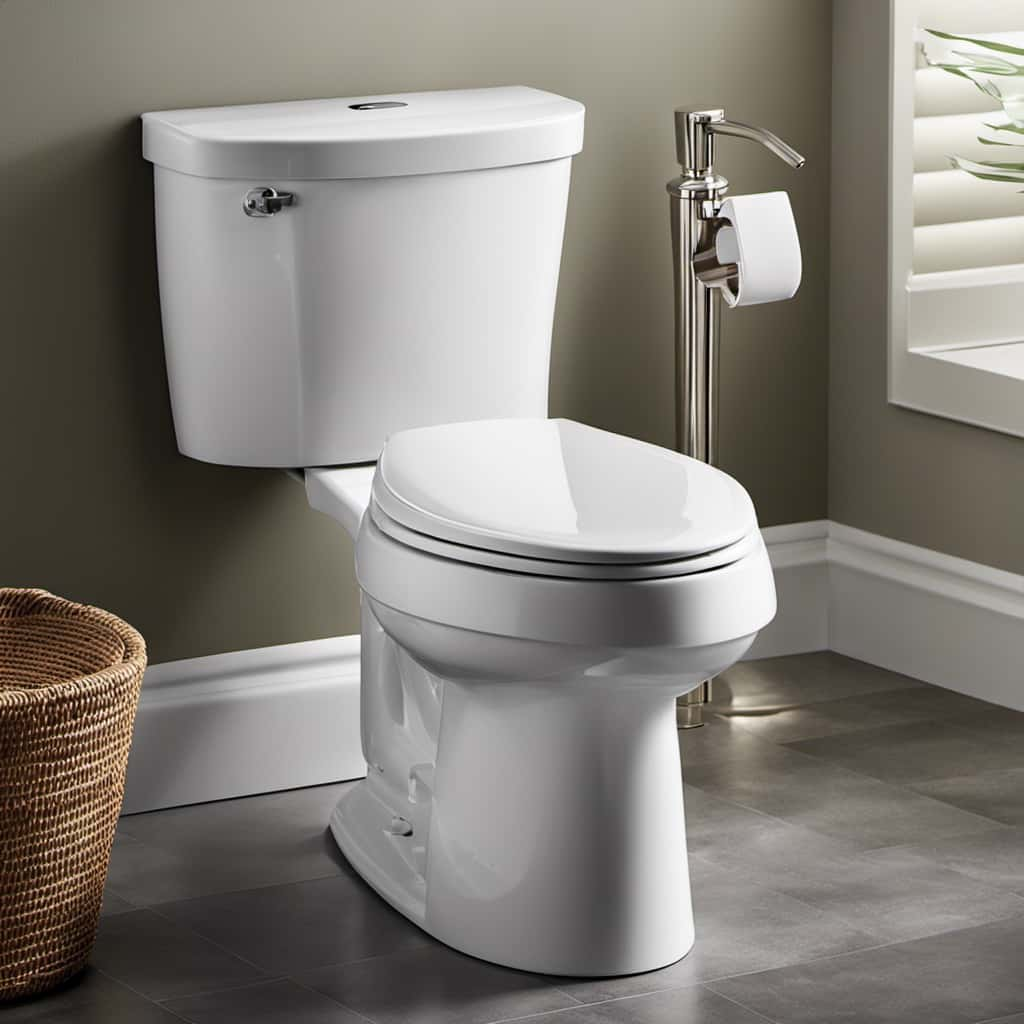
Key Takeaways
- Inspect for visible issues such as obstructions or clogs.
- Clean debris or mineral buildup to improve flush performance.
- Replace faulty flapper valve to fix issues like weak or incomplete flush.
- Regular cleaning, maintenance, and checking for leaks can prevent future toilet flush problems.
Common Toilet Flush Problems
We often encounter common toilet flush problems that require immediate attention. One of these issues is a malfunctioning toilet flush handle. If you find that your handle is loose or not returning to its original position after flushing, it may need to be fixed or replaced. Here’s a step-by-step guide on how to do it:
- Start by removing the tank lid and locating the handle inside.
- Check if the handle is loose or damaged. If so, tighten any loose screws or replace the handle altogether.
- If the handle isn’t the problem, the issue might be related to the water level.
- Adjust the water level by turning the float adjustment screw clockwise to raise the water level or counterclockwise to lower it.
- Flush the toilet to test if the problem has been resolved.
Tools and Materials You’ll Need
To fix a toilet flush, we’ll need a few tools and materials. Here’s a list of what you’ll need:
- Adjustable wrench: This tool will come in handy when loosening and tightening nuts and bolts.
- Screwdriver: Make sure to have both a flathead and a Phillips head screwdriver to handle different types of screws.
- Plunger: A plunger is essential for unclogging any blockages in the toilet bowl.
- Replacement parts: Depending on the issue you’re facing, you may need to replace components like the fill valve, flush valve, or flapper.
These tools and materials are crucial for performing toilet flush maintenance and troubleshooting techniques. By having them at your disposal, you’ll be well-prepared to tackle any problem that arises with your toilet flush.
Step-by-Step Guide to Troubleshooting
First, start by inspecting the toilet flush for any visible issues. Look for any obstructions or clogs in the flush valve or the rim holes. These can cause a weak toilet flush. If you notice any debris or mineral buildup, clean them thoroughly using a toilet brush or a wire hanger.
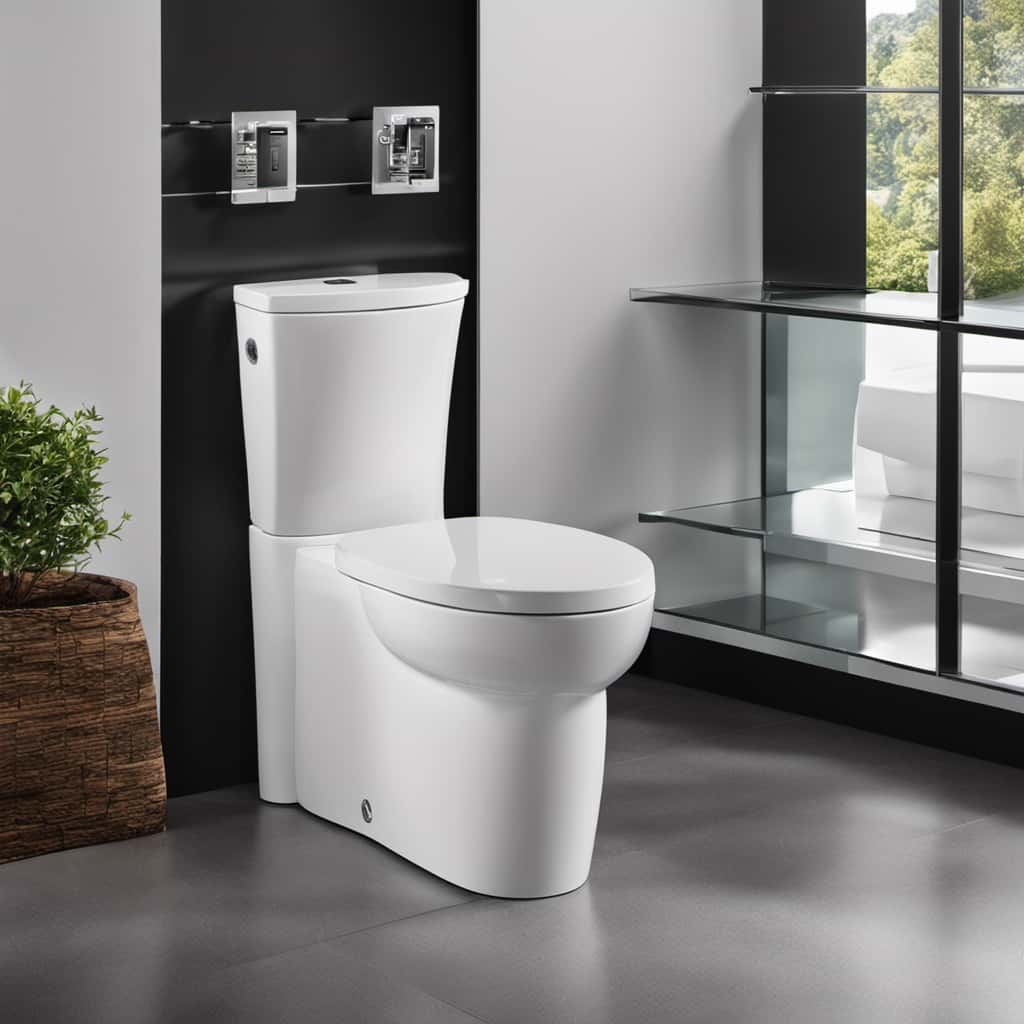
Next, check the water level in the tank. If it’s too low, adjust the float ball or the fill valve to increase the water level.
If the toilet flush continues to run after flushing, it may be due to a faulty flapper valve. To fix this, replace the flapper valve with a new one. Make sure to turn off the water supply before replacing any parts.
Repairing a Faulty Flush Mechanism
To repair a faulty flush mechanism, start by turning off the water supply to the toilet. This will prevent any water from flowing into the tank while you work on it. Once the water supply is turned off, you can begin troubleshooting the issue.
Here are some common flushing issues and troubleshooting tips:

- Weak flush: Check if the flapper is properly sealing the flush valve. Adjust or replace the flapper if necessary.
- Double flush: Ensure that the chain connecting the flush lever to the flapper is properly adjusted. It should have some slack but not be too loose.
- Continuous running: Examine the fill valve and adjust the water level if it’s too high. Alternatively, replace the fill valve if it’s damaged.
- No flush at all: Inspect the handle and linkage to ensure they’re properly connected. Adjust or replace them if needed.
By following these troubleshooting tips, you can effectively repair a faulty flush mechanism.
Now, let’s move on to preventing future toilet flush issues.
Preventing Future Toilet Flush Issues
Moving forward, let’s address how we can prevent future issues with the toilet flush. Proper maintenance is key to ensuring a well-functioning toilet flush. Here are some maintenance tips to help you keep your toilet flush in good condition:
- Regular cleaning: Clean the toilet bowl and flush valve regularly to prevent the buildup of debris and mineral deposits that can affect the flush mechanism.
- Check for leaks: Inspect the toilet regularly for any signs of leaks, such as water pooling around the base or a constantly running flush. Address any leaks promptly to prevent damage to the flush mechanism.
- Avoid flushing non-flushable items: Remind everyone in your household to only flush toilet paper and waste. Flushing items like wipes, sanitary products, or cotton balls can cause clogs and damage the flush mechanism.
Frequently Asked Questions
What Are Some Common Reasons for a Toilet Flush Not Working Properly?
Common reasons for a toilet flush not working properly include a faulty flapper, clogged drain, or low water level. To fix this, try replacing the flapper, clearing any clogs, or adjusting the water level. These are common solutions and troubleshooting steps.

How Can I Determine if the Issue With My Toilet Flush Is Due to a Faulty Flush Mechanism or a Clog in the Pipes?
To determine if the issue with the toilet flush is due to a faulty flush mechanism or a clog in the pipes, follow these troubleshooting steps. Look for signs of a faulty mechanism or check for clogged pipes.
Are There Any Specific Tools or Materials That Are Commonly Needed When Fixing a Toilet Flush?
Toilet flush repair requires specific tools and materials. We will discuss the necessary tools for toilet flush repair. It is important to have a plunger, adjustable wrench, screwdriver, and replacement parts on hand.
Can I Fix a Toilet Flush Myself, or Do I Need to Hire a Professional Plumber?
Toilet flush repair guide: wondering if DIY or hiring a plumber is best? Let’s break it down. DIY can save money, but if you lack skills or time, a professional plumber ensures a proper fix.
Are There Any Tips or Preventive Measures I Can Take to Avoid Future Toilet Flush Issues?
Toilet flush maintenance is crucial for preventing future issues. Regularly check for leaks, clean the flush valve and flapper, and ensure proper water levels. Troubleshooting toilet flush problems becomes easier with these preventive measures.

Conclusion
In conclusion, fixing a toilet flush may seem like a daunting task, but with the right tools and knowledge, it can be easily resolved.
By following the step-by-step guide provided and troubleshooting the common problems, you can successfully repair a faulty flush mechanism.
Don’t forget to take preventive measures to avoid future issues.
So, next time you encounter a toilet flush problem, fear not, as you now have the know-how to fix it yourself.




